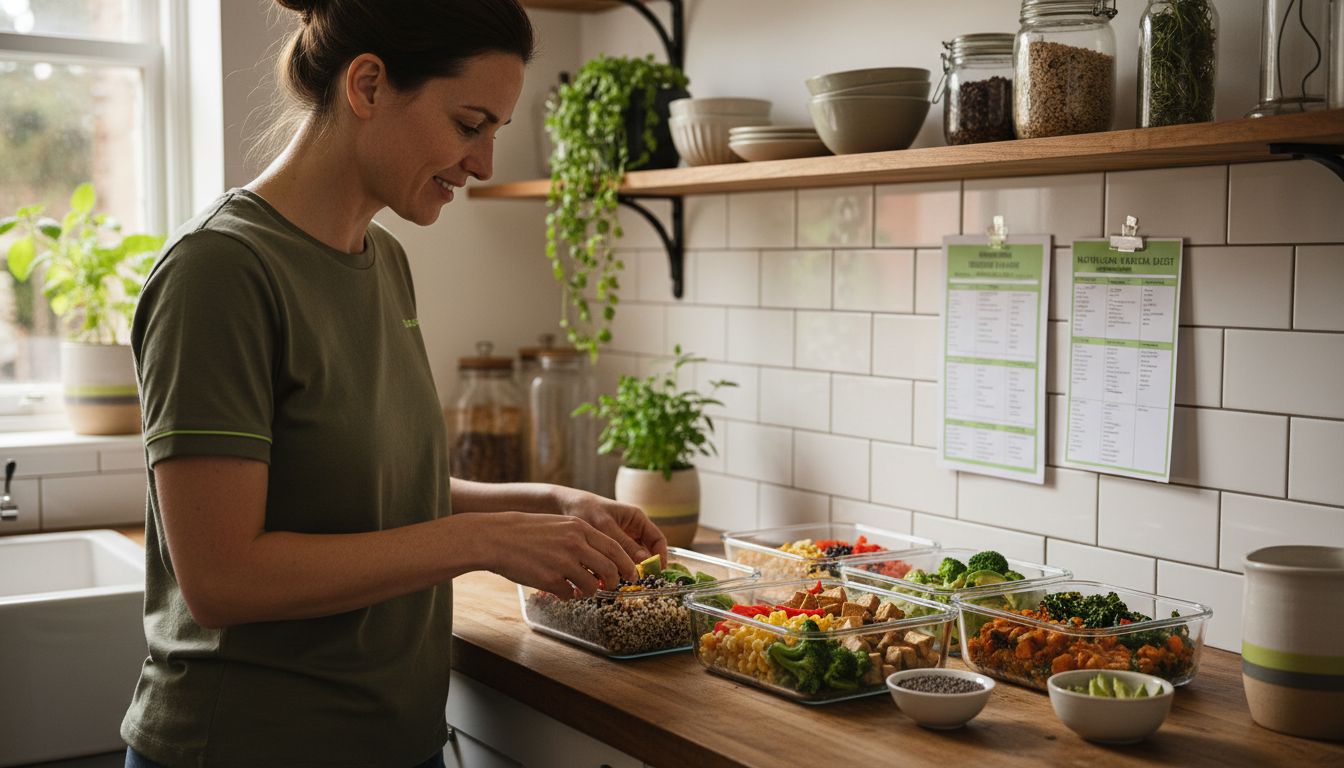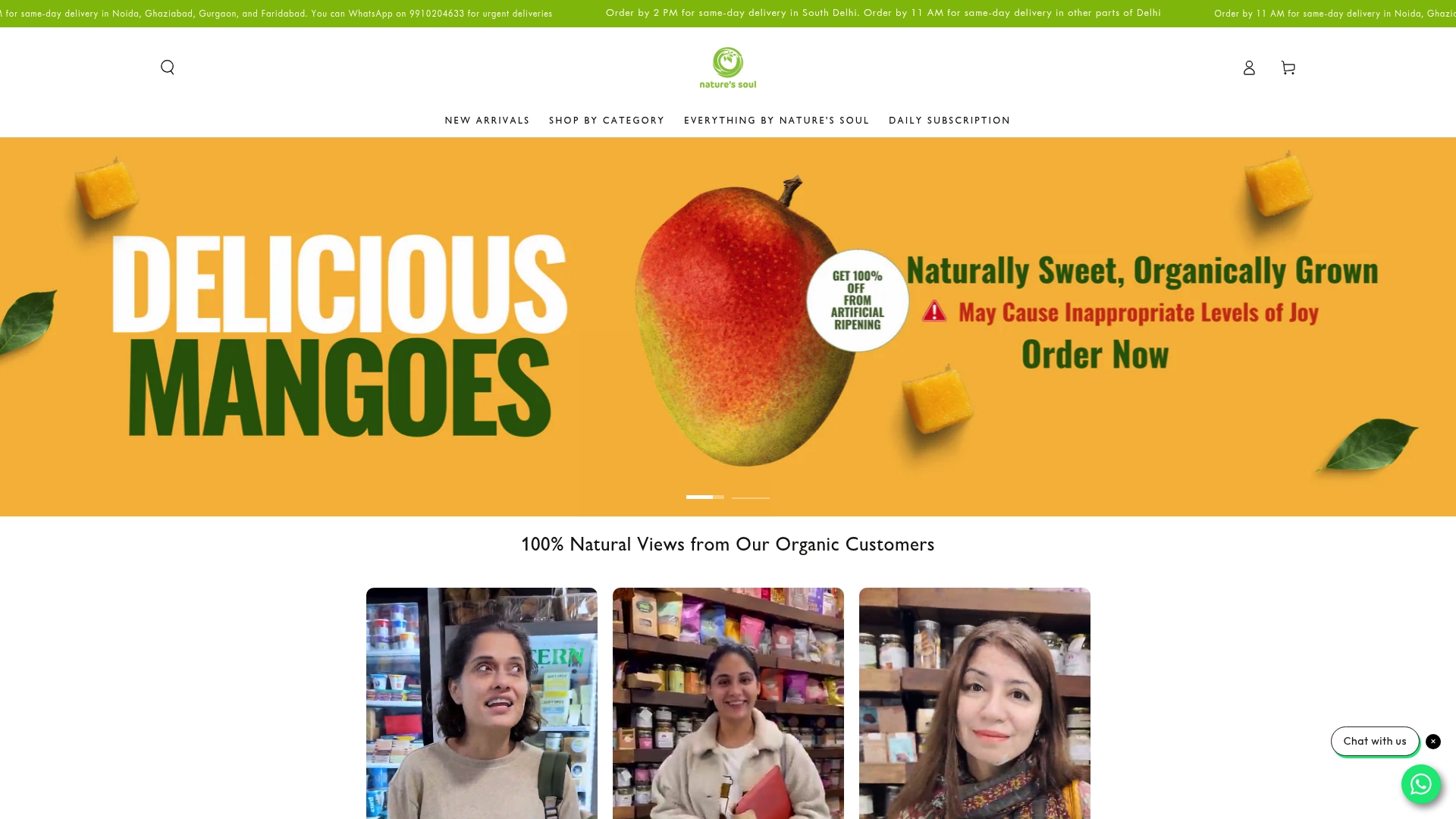More people than ever are choosing a vegan lifestyle, with recent surveys showing nearly 10 million Americans now follow a plant-based diet. Thinking about going vegan can feel overwhelming at first, especially if you are used to eating animal products regularly. Making the switch thoughtfully gives you the best chance for long-term success, better health, and a positive impact on the environment. Get ready to discover the practical steps that turn a vegan dream into a daily habit.
Table of Contents
- Step 1: Assess Your Readiness And Set Clear Goals
- Step 2: Stock Your Kitchen With Vegan Essentials
- Step 3: Plan Balanced Vegan Meals For Every Day
- Step 4: Shop For Fresh, Organic, And Clean Ingredients
- Step 5: Monitor Your Nutrition And Make Adjustments
Quick Summary
| Key Point | Explanation |
|---|---|
| 1. Assess your current diet honestly | Conduct a personal nutrition audit to understand your eating habits and challenges before transitioning to veganism. |
| 2. Set measurable goals for transition | Create specific, achievable objectives like trying new recipes or replacing animal products in meals to track your progress. |
| 3. Stock your kitchen with essentials | Build a pantry filled with plant-based staples like legumes, grains, and spices to support your vegan cooking. |
| 4. Plan nutritionally balanced meals | Design a week-long meal plan focused on diverse plant proteins and colorful vegetables for optimal nutrition. |
| 5. Monitor your nutrient intake regularly | Keep a food diary to track essential nutrients and make adjustments through regular consultations with a nutritionist. |
Step 1: Assess Your Readiness and Set Clear Goals
Starting a vegan diet requires honest self evaluation and strategic planning. According to the Dietary Guidelines Advisory Committee, carefully modeling your nutritional approach is crucial when transitioning away from animal products.
To begin your vegan journey, start by conducting a personal nutrition audit. Ask yourself some key questions: What are your current eating habits? How much of your current diet consists of animal products? What nutritional concerns might you have about removing these foods? Write down your answers to create a baseline understanding of your dietary landscape and potential challenges.
A practical approach involves creating a structured goals worksheet. Break down your vegan transition into specific, measurable objectives. For instance, you might set goals like “Replace meat with plant protein in 3 meals per week” or “Learn 5 new vegan recipes this month.” These concrete milestones will help you track progress and maintain motivation during your dietary transformation. Remember that transitioning to a vegan diet is a personal journey best approached with patience and self compassion.
Ready to dig deeper into your vegan nutrition plan? The next step will help you understand exactly what nutrients you need to prioritise.
Step 2: Stock Your Kitchen with Vegan Essentials
Transitioning to a vegan diet starts with transforming your kitchen into a plant powered sanctuary. According to Knorr UK, building a well stocked pantry requires strategic selection of versatile staples that will support your nutritional needs and culinary creativity.
Begin by creating a comprehensive shopping list of essential vegan ingredients. Your core pantry should include protein rich staples like legumes, whole grains, tofu, and tempeh. Add nutritional powerhouses such as nuts, seeds, and nutritional yeast to ensure you are getting a balanced range of nutrients. Stock up on a variety of plant based oils for cooking and dressing, and invest in an extensive spice collection to keep your meals exciting and flavorful.
A practical tip is to organize your kitchen into zones for different food types: grains and legumes, baking supplies, spices, and fresh produce. This approach will make meal preparation smoother and help you track your ingredients more effectively. Consider investing in clear storage containers to keep your ingredients fresh and visible. When you are ready to cook, you will have a well organized kitchen that supports your new vegan lifestyle.
Meal prep strategies can help you make the most of your newly stocked pantry.
Step 3: Plan Balanced Vegan Meals for Every Day
Creating a nutritionally complete vegan meal plan requires strategic thinking and careful consideration of your dietary needs. According to research from arXiv, modern dietary assessment systems recommend analyzing food items and their proportions to ensure optimal nutritional balance aligned with healthy eating guidelines.
Start by designing a weekly meal template that incorporates diverse plant based protein sources such as legumes, tofu, tempeh, and quinoa. Aim to include a variety of vegetables across different colour groups to maximise nutrient intake. Each meal should feature a balanced combination of complex carbohydrates, plant proteins, healthy fats, and micronutrient dense ingredients. Consider creating a colour coded meal planner that helps you visualise the nutritional diversity of your weekly menu.
A practical approach is to batch prepare core ingredients at the start of each week. This strategy allows you to mix and match components easily, preventing mealtime monotony while ensuring consistent nutrition. Plant based meal planning can transform your approach from stressful to streamlined. Remember that flexibility is key nutritional diversity matters more than perfection in your vegan journey.

Step 4: Shop for Fresh, Organic, and Clean Ingredients
Elevating your vegan diet begins with selecting high quality ingredients that nourish both body and planet. According to PETA, purchasing fresh organic ingredients and storing them strategically is fundamental to maintaining a successful plant based lifestyle.
When shopping, prioritize whole grains, legumes, and plant based proteins as recommended by Knorr. Focus on purchasing seasonal produce from local farmers markets or organic sections. Look for vibrant coloured vegetables and fruits with minimal packaging. Learn to read ingredient labels carefully avoiding processed foods with lengthy chemical names. Create a shopping list that emphasizes whole food ingredients like quinoa, lentils, fresh leafy greens, nuts, and seeds.
A practical tip is to invest in clear airtight containers for storing your ingredients. This not only keeps your food fresh longer but also helps you visualise your pantry and meal planning more effectively. Understanding clean ingredients can transform your approach to nutrition and help you make more informed purchasing decisions. Your shopping strategy is about quality not just quantity.
Step 5: Monitor Your Nutrition and Make Adjustments
Transitioning to a vegan diet requires careful nutritional tracking and strategic adjustments. According to research from repository.unar.ac.id, monitoring energy, macronutrient, and micronutrient intakes is crucial for maintaining optimal health and performance.
Begin by keeping a detailed food diary that tracks your daily nutrient consumption. Pay special attention to protein sources, vitamin B12, iron, calcium, and omega 3 fatty acids which can be challenging to obtain in vegan diets. Use digital tracking apps or spreadsheets to log your meals and assess nutritional balance. The arXiv research suggests using image based dietary assessment systems to help visualise and analyse your nutritional intake more effectively.
A practical strategy is scheduling quarterly health check ups with a nutritionist who specialises in plant based diets. They can help you identify potential nutrient deficiencies and recommend personalised dietary adjustments.
![]() How to start eating healthy can provide additional insights into maintaining a balanced nutritional profile. Remember nutrition is a journey of continuous learning and adaptation.
How to start eating healthy can provide additional insights into maintaining a balanced nutritional profile. Remember nutrition is a journey of continuous learning and adaptation.
Begin Your Natural Vegan Journey with Confidence
Starting a vegan diet naturally can feel overwhelming with all the planning and nutritional considerations involved. This article highlights key challenges such as assessing your readiness, stocking a balanced pantry, and carefully monitoring your nutritional intake to avoid common pitfalls like missing essential nutrients. You want to nurture your body with clean, wholesome ingredients while keeping meal preparation enjoyable and sustainable.
At Nature’s Soul, we understand these concerns and support your path with a wide range of organic, natural vegan products crafted from clean ingredients. Whether you need fresh fruits and vegetables or nutritious dry groceries to build your meal plan, we make it simple to source everything in one place. Visit our main site to explore quality options that align perfectly with your new lifestyle.

Ready to transform your kitchen into a plant-powered sanctuary? Discover how our carefully selected products can help you stock vegan essentials effortlessly. Jumpstart your balanced meal planning and nourish your body naturally by visiting Nature’s Soul today. Your healthier, compassionate way of living begins with that first thoughtful step.
Frequently Asked Questions
How do I assess my readiness to start a vegan diet?
Starting your vegan diet journey begins with an honest self-evaluation of your current eating habits and dietary challenges. Conduct a personal nutrition audit by asking yourself how much of your diet currently consists of animal products and what nutritional concerns you may have. Write down your answers to create a clear baseline for your transition.
What essential vegan ingredients should I stock in my kitchen?
To transition smoothly to a vegan diet, stock your kitchen with essential ingredients like legumes, whole grains, tofu, nuts, seeds, and a variety of spices. Create a comprehensive shopping list that emphasizes these staples, and consider organizing your pantry into zones for different food types. Aim to have a well-equipped kitchen that encourages culinary creativity.
How do I plan balanced vegan meals for the week?
Design a weekly meal plan that incorporates a variety of plant-based protein sources, plenty of colorful vegetables, and a balance of complex carbohydrates and healthy fats. Use a meal template and consider batching core ingredients at the start of each week for easy meal preparation. Aim to mix and match items to ensure nutritional diversity and prevent mealtime monotony.
What are important nutrients to monitor on a vegan diet?
When adopting a vegan diet, it’s vital to monitor your intake of protein, vitamin B12, iron, calcium, and omega-3 fatty acids, as these nutrients can be challenging to obtain. Keep a detailed food diary to track your daily nutrient consumption and evaluate your nutritional balance. Regularly assess your diet for potential deficiencies.
How can I make adjustments to my vegan diet over time?
To make necessary adjustments to your vegan diet, consider scheduling quarterly health check-ups with a nutritionist experienced in plant-based diets. They can help identify any nutrient deficiencies and offer personalized dietary recommendations to enhance your health. Continuously learning and adapting your diet is key to long-term success.
How can I stay motivated during my transition to a vegan diet?
Maintain motivation by setting specific, measurable goals for your vegan journey, such as learning new recipes or replacing certain animal products in your meals. Keep track of your progress by creating a structured goals worksheet, and practice self-compassion throughout the transition process. Aim to celebrate small milestones to keep your enthusiasm high.






